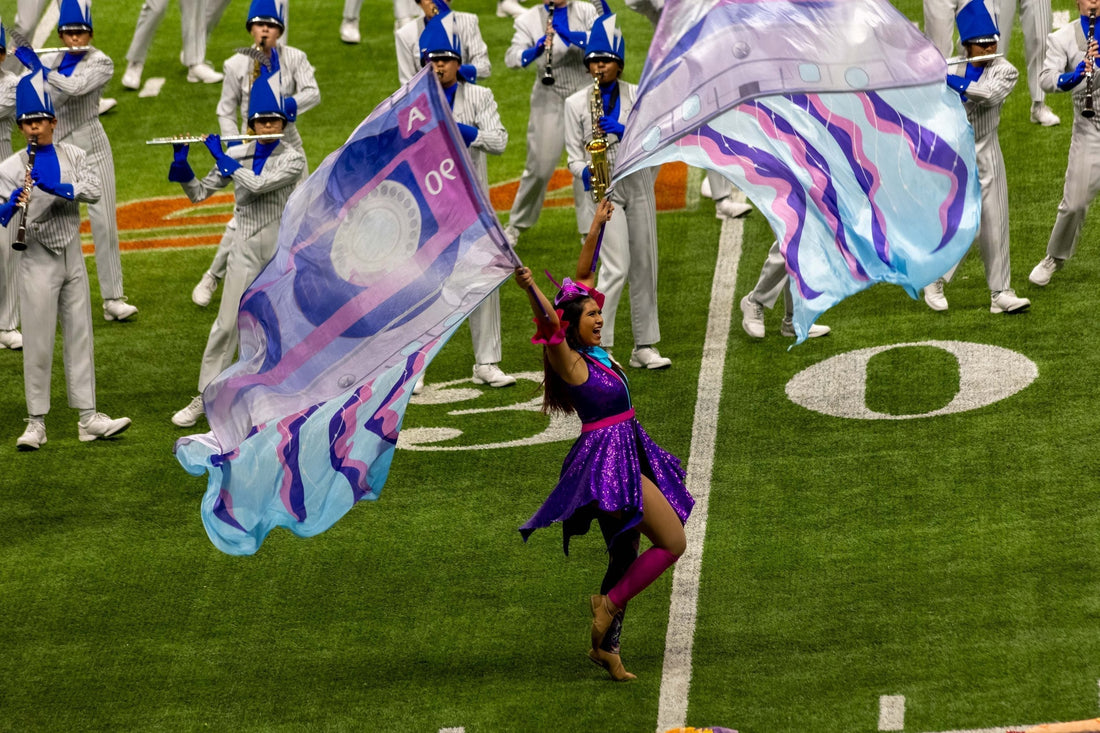key takeaways:
Yes, color guard can be seen as a sport due to its physical intensity, precision, and competitive aspects. Though not classified under traditional sports leagues, it requires athleticism and training similar to other performance-based activities.
Color guard. A mesmerizing blend of art and athleticism, it is an activity that has enticed the hearts and minds of participants and spectators alike. But here's the burning question: Is color guard a sport?
The answer, intriguingly enough, demands an exploration into the very essence of what defines sport, the intricate relationships within the color guard community, and the life skills it fosters in its participants.
Understand What Does Color Guards Do
Before we get ahead of ourselves, let’s clarify what color guard actually entails. This performing arts activity involves spinning and tossing equipment, typically flags, rifles, and sabers, while incorporating dance elements to create a visually striking performance.
The participants, often called "guardies," dedicate countless hours to perfect choreography, timing, and emotional expression. Some claim it’s more of an art form than a sport; others staunchly disagree, arguing that its physical demands unequivocally categorize it as an athletic endeavor.
Color guard blends athleticism, dance, and competition, making it comparable to sports. While it is not officially recognized as one, it demands stamina, coordination, and teamwork, much like gymnastics and cheerleading.
Winter Guard International (WGI) is the governing body of winter guard, setting the stage for competitions and establishing rules and regulations akin to any traditional sport setting. This oversight serves to standardize the competitive structure and ensure artistic and creative standards.
WGI: Governance and Structure
Winter Guard International offers a robust competitive structure, divided into Scholastic and Independent divisions, each fostering a sense of community and achievement. Through its precise judging criteria and categories, WGI is a testament to color guard's complexity and artistic merit. Not only does WGI validate color guard as a sport through its competitive setting, but it also transforms the platform into an educational entity, developing character, discipline, and teamwork among its participants.
Color Guard and the Definition of Sport
Historically, the definition of a sport emphasizes physical exertion, skill, and competitive elements. Color guard certainly checks all these boxes.
The choreography demands mastery of techniques and impeccable synchronization, pushing participants to their physical and mental limits.
This argument for color guard’s classification as a sport is further reinforced by the passion and dedication showcased in competitions, where the stakes are equally high as in any other sport.
Participant Experiences and Values
In exploring the experiences of those who partake in color guard, a few themes repeatedly surface: identity, character development, and community. These aspects not only foster personal growth but also align with principles encouraged in more traditional sports. Participants often liken their journey to that of athletes, experiencing the same camaraderie, victories, and challenges.
Analysis of Attributes and Properties
Physical and Artistic Demands
The debate as to whether color guard is a sport often circles back to its combination of physicality and artistry. Requiring rigorous training similar to that of other athletic activities, color guard incorporates dance, gymnastics, and equipment manipulation, demanding high levels of agility, strength, and endurance. Participants endure long practice sessions and rigorous conditioning, mirroring the routines of sports teams.
Educational Value
The educational facet of color guard is also not to be overlooked. As WGI integrates educational standards into its framework, participants gain not only performance skills but also valuable life lessons. According to a study focused on the experiences within Winter Guard International, traits such as discipline, perseverance, and teamwork are cultivated, mirroring those found within the realm of sports .
Community and Teamwork
Color guard’s vibrant community cannot be overstated. Participants form bonds akin to those found in any team environment, sharing in both triumphs and failures. This unity further cements color guard's place as a sport, creating an atmosphere built on mutual support and shared goals.
Conclusion
Returning to our core inquiry, the ongoing debate about whether color guard is a sport finds plenty of evidence in favor of a resounding 'yes.' Through its rigorous demands, structured competitive environment provided by governing bodies like WGI, and its embracement of core values akin to traditional sports, color guard firmly positions itself as a bona fide sport. It extends beyond a performance art, merging creativity with athleticism and fostering lifelong skills in its participants.
For those ready to dive into the world of color guard, attending events hosted by entities like Winter Guard International might just be the beginning of appreciating the intricacies of this compelling sport. Additionally, exploring resources like Color Guard Gifts for equipment and community insights further bridges understanding between the artful and athletic .
Color guard's evolution is unwinding like a flag in motion, blending the disciplined elegance of dance with the invigorating spirit of a sport. The dialogue it sparks will, undoubtedly, carry onward, enriched by every pirouette, toss, and united rhythm.

